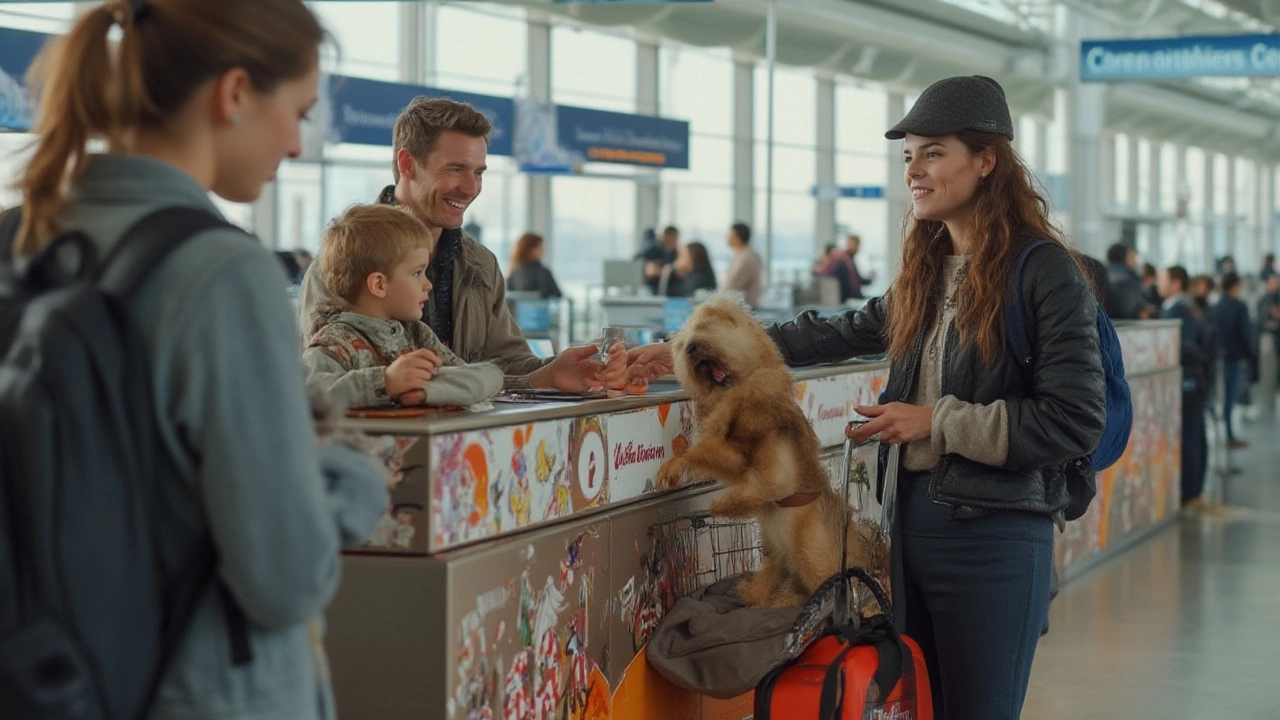Airline Pet Policy: What You Need to Know Before You Fly
Planning a trip with your dog or cat? Knowing the airline pet policy saves you time, money, and headaches. Each carrier has its own rules about paperwork, carriers, and fees. This guide breaks down the most common requirements so you can book with confidence.
Key Documents and Health Checks
First, gather a current health certificate. Most airlines require a vet‑signed certificate issued within 10 days of travel. The form shows your pet is up‑to‑date on rabies, distemper, and any other required shots. Some carriers also ask for a recent blood test, especially for brachy‑cephalic breeds.
Keep a copy of your pet’s microchip registration handy. If the airline asks for proof of identification, the microchip number and a photo of the chip scanner printout will satisfy them. Having everything in a single folder makes the check‑in counter experience smoother.
Choosing the Right Carrier and Booking Tips
Size matters. Measure your pet’s length (from nose to tail tip) and height (shoulders to ground) and compare it to the carrier dimensions listed on the airline’s website. The carrier must fit under the seat if you’re traveling in‑cabin, or meet the cargo hold specifications for larger dogs.
Look for carriers with ventilation on at least three sides and a secure, lockable latch. Soft‑sided carriers are acceptable for in‑cabin travel, but hard‑shell crates are usually required for cargo. Label the carrier with your name, phone number, and “Live Animal” stickers.
When you book, select the “pet in cabin” or “pet cargo” option early. Seats close to the front of the plane are quieter and easier for crew to access. Some airlines limit the number of pets per flight, so booking as soon as you know your dates is essential.
Check the airline’s fee schedule. In‑cabin pet fees range from £20 to £100 per way, while cargo fees depend on weight and distance. Knowing the total cost upfront prevents surprise charges at the airport.
On the day of travel, arrive at the airport at least two hours early. This gives you time to complete any extra paperwork, go through security, and settle your pet into the carrier. Keep a water dish and a small towel inside the carrier to keep your pet comfortable.
Security screening is simple: you’ll place the carrier on the conveyor belt while you walk through the metal detector. If you’re asked to open the carrier, reassure the officer that your pet is calm and well‑trained.
During the flight, avoid opening the carrier unless absolutely necessary. Speak softly to your pet and offer a treat if the airline allows it. Most pets cope well if they’re familiar with the carrier before the journey.
After landing, give your pet a minute to stretch and drink water. Check the carrier for any signs of damage before you head home. If you notice any health issues, contact a vet right away.
Following these steps makes the airline pet policy less of a mystery and more of a routine. With the right paperwork, carrier, and timing, you and your furry friend can enjoy a smooth, stress‑free flight.
- Morgan Ainsworth
- 0 Comments
Can My 50 Pound Dog Fly In Cabin With Me? Rules, Tips & Airline Policies Explained
Hoping your 50-pound dog can fly in the cabin with you? Learn airline rules, alternatives for big dogs, and tips for less stressful pet travels.
View More
